
Bamboo Workshop in Hoi An – Crafting a bamboo lamp
Half a day of woodworking in 30° Celsius heat might not be something you think of when thinking about things to do on vacation. I am here to tell you why you should consider taking part in a bamboo workshop in Hoi An anyway (I almost didn’t do it either) and how it shaped my understanding of the people and culture of central Vietnam.
When I booked my accommodation in Hoi An on AirBnB I was recommended things to do in the city. One of them was a bamboo workshop in Hoi An at a bamboo workshop. (You will read bamboo workshop a lot in this article, I apologise in advance.)
At first, I didn’t book it, mainly because I didn’t know how much time I would have in Hoi An, but also because I wasn’t sure how I would ever get anything home I made. It seems like that is a common problem because some people who completed the workshop left what they crafted. To be upfront: I did end up buying a big suitcase for the journey back home. Not only because of this workshop, but it did play a part in the decision.
I am really glad I decided to book the workshop though because it turned out to be a great experience.
The Taboo Bamboo Studio
The Taboo Bamboo Studio is located in Cam Thanh village, roughly 6km from the Old Town of Hoi An. If you rent a scooter or a bicycle (some places offer free bicycles) you’ll be there in no time, while travelling through the rice fields and less busy streets of Hoi An. I would advise against going there with a Grab Taxi, since it won’t be a problem to get there, but you will most likely not be able to get a Grab to take you back to the city.
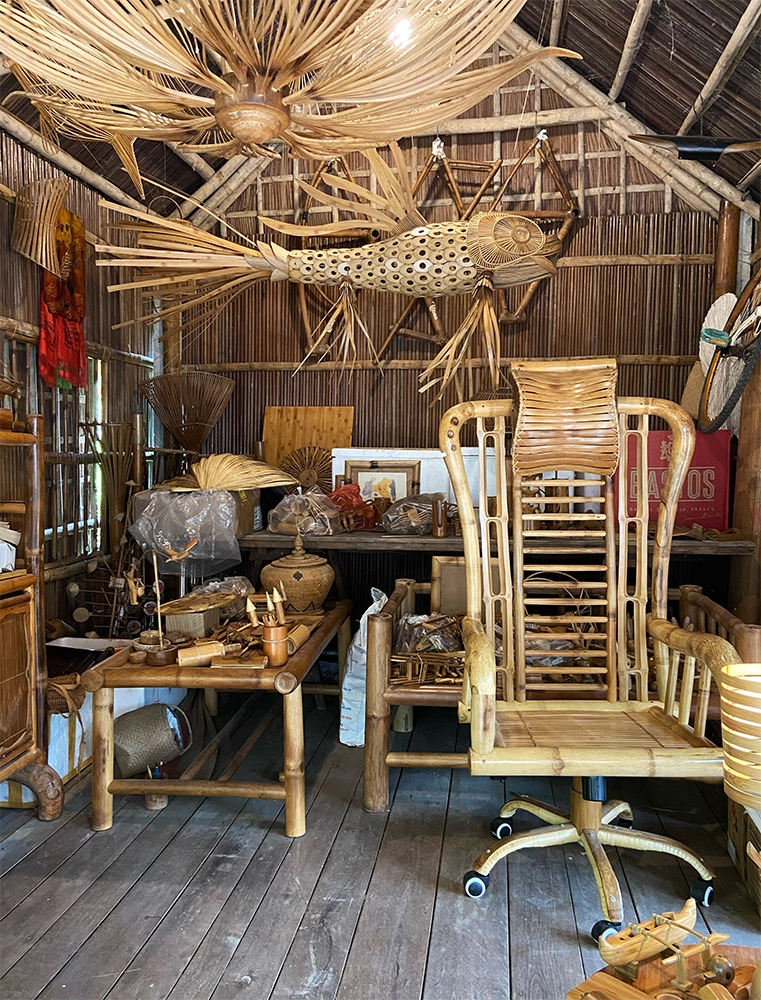
When you step through the wooden… – excuse me, the bamboo archway of the taboo studio it feels like stepping into a different world, or a different time. While the streets around the workshop are full of concrete and stone the houses (made from bamboo) are surrounded by plants (mainly bamboo) and the main colours are green and brown instead of grey.
I was welcomed with an understanding smile and the reassurance that it wasn’t an issue that I was late. Then I was invited to visit their house(s) and see all kinds of furniture, decorations and a lot of different household facilities they have created out of bamboo: toys, boxes, chairs, tables and even a sink!
Oh and of course the house is built from bamboo as well. I felt like a kid in a toy shop!
When I asked if everyone else was already in the workshop area I was met with confusion. That’s when I found out I was the only tourist there. A recurring theme during this trip.
The workshop itself looks very basic and quite cluttered at first, but when you take a closer look you notice that everything has its place and that the tools they have are perfect for their purpose.
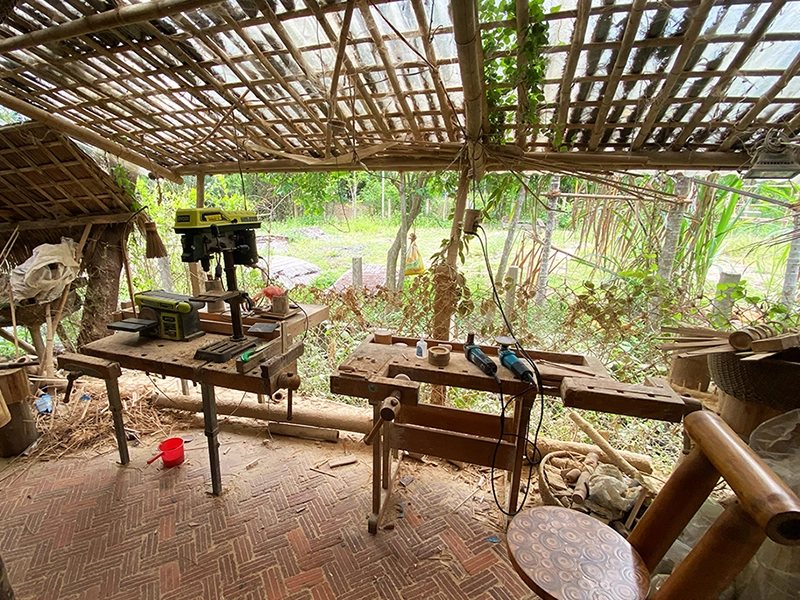
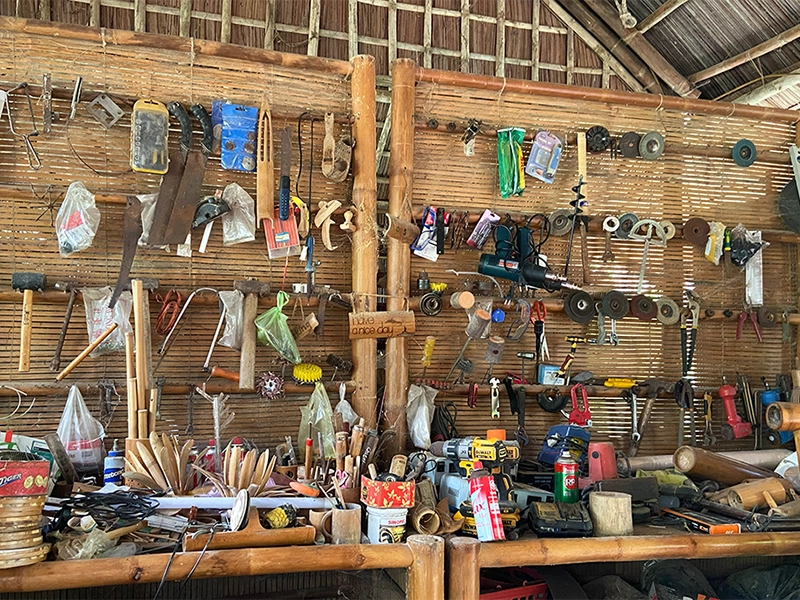
My teacher told me about Tan and his family, the founders of this workshop. They have been in the bamboo business for three generations. Tan, the current owner, made it his mission to maintain this traditional craft by combining modern design with new technologies and opening up the workshop for tourists and groups as well, teaching the next generation about these age-old techniques.
As for the tourist side of things: The bamboo workshop certainly is a unique thing to do. That doesn’t mean that the craft itself isn’t traditional.
Crafting a lamp in the bamboo workshop in Hoi An
You can see the crafting process from left to right in the gallery below.
Step 1: Choose a design.
Step 3: Drawing the design on the bamboo with a pencil.
Step 2: Cut a piece of bamboo off a long bamboo tube with a hand saw.
Step 4: Drill holes of different sizes into the bamboo using the industrial standing drill (bamboo doesn’t splinter as wood does, so the drilled holes are very clean)… I did accidentally break the thinnest drillbit… luckily that was just after Tan had arrived and they replaced it, reassuring me that they wear out over time.
Step 5: Use a jigsaw to cut out the lotus flower design. I needed a lot of help with the one because I just couldn’t hold the saw steady.
Step 6: Sand down the outer layer of the bamboo with a sanding machine. I did try but again needed help as I was barely able to hold the sanding machine while it was going.
Step 7: Flame the design. This is done to make the design stand out in colour.
Step 8: Sand down the bamboo by hand.
Step 9: Spray the bamboo with varnish.
Then you repeat the 8th and 9th steps.
Step 10: Insert a base with a lightbulb into the bamboo tube which turns it into a lamp.
Step 11: Use a soldering pin to burn your name / date / anything-you-want-to-write into the bamboo
While sanding down the bamboo my teacher and Tan sat down at the table with me. My teacher was working on a bamboo bird, telling me how the bamboo animals are his sons’ favourite toys. Tan was working on electric parts, setting up lightbulbs on bases and connecting said bases to wires.
Knowing all the steps, the drawing talent, the precision and the sheer strength that is needed to complete just one lamp makes me appreciate the work that goes into creating things from bamboo even more.
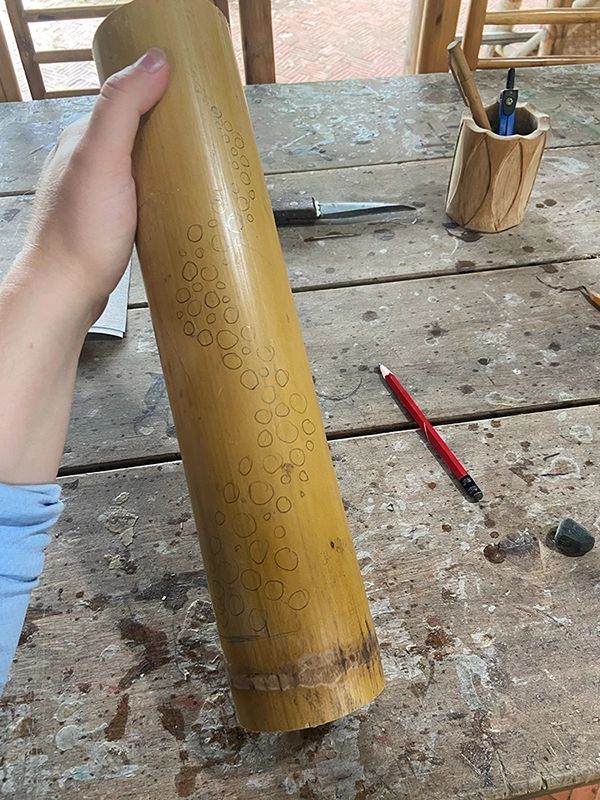
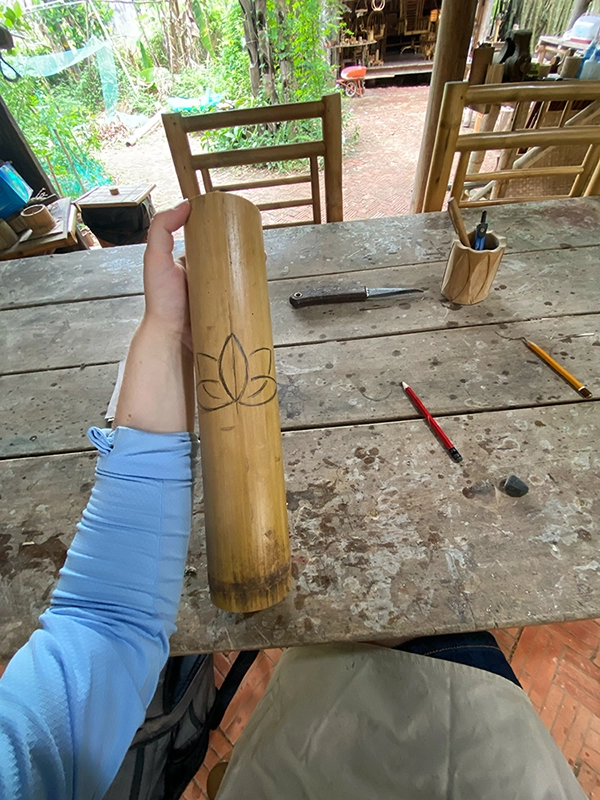
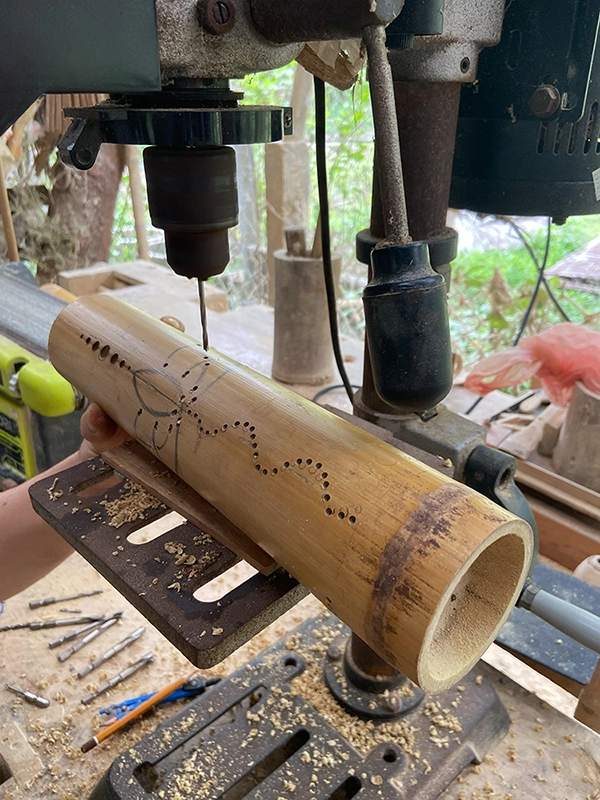


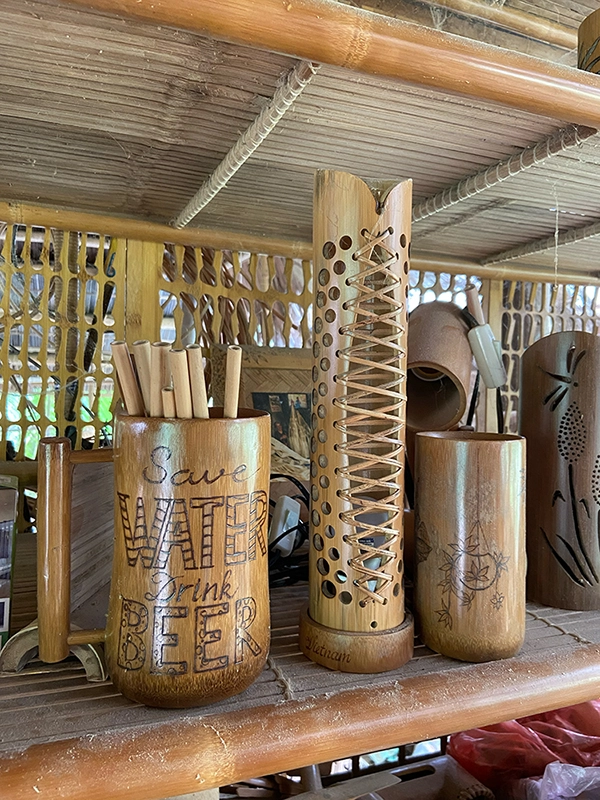
Knowing all the steps, the drawing talent, the precision and the sheer strength that is needed to complete just one lamp makes me appreciate the work that goes into creating things from bamboo even more.
My thoughts on the Bamboo Workshop:
If you want to learn more about a traditional handicraft of Central Vietnam, while also creating a truly unique souvenir, this is the thing to do. Sure, some people will prefer to sit at the beach and drink a mimosa, but you can do that anywhere. To connect to a place and its people you have to immerse yourself in the local culture. You don’t have to have any woodworking skills to take this workshop!
Bamboo Workshop in Hoi An – Booking Details
All materials and tools you need are included in the price of the workshop. People of all skill levels in handiwork are welcome and they help you finish a project of your choice.
Starting times: 9 AM and 2 PM, but they also offer varied times upon request.
Address: Thanh Tam Dong – Cam Thanh – Hoi An, Trần Nhân Tông, Cẩm Thanh, Hội An, Quảng Nam 51000, Vietnam
Booking: You can book here on TripAdvisor* or here on Viator*
Greet them from me if you do!

More Experiences in Hoi An



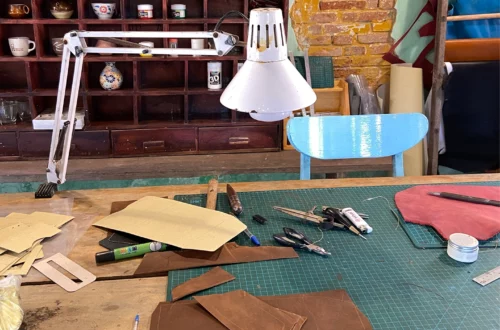


One Comment
Pingback: